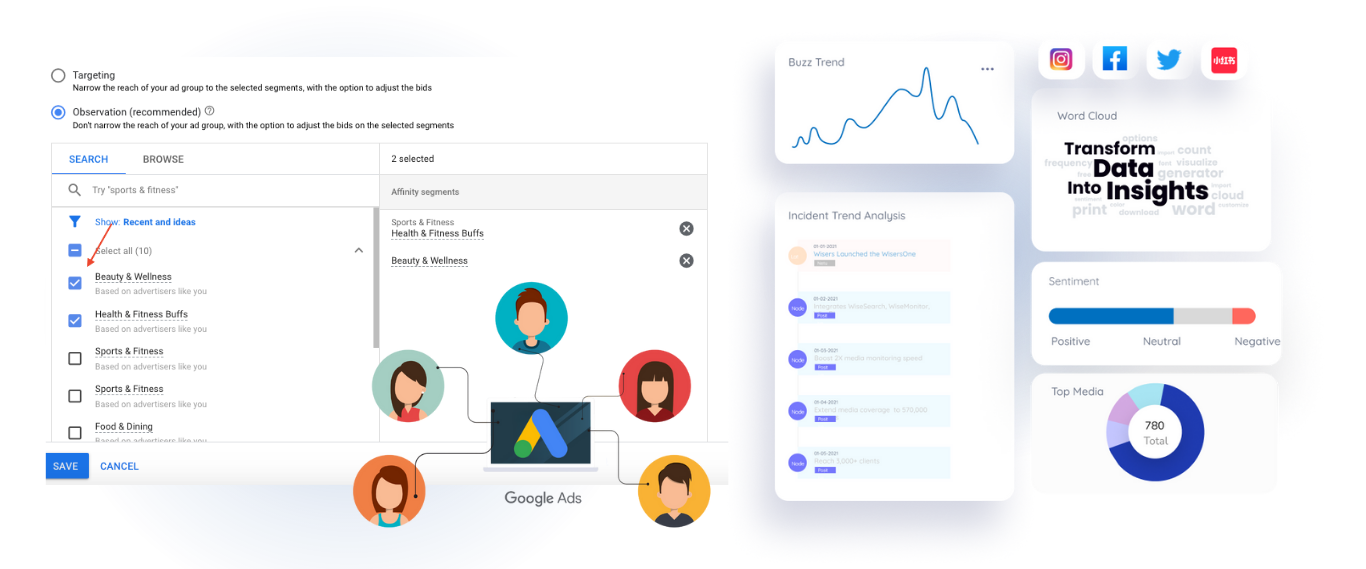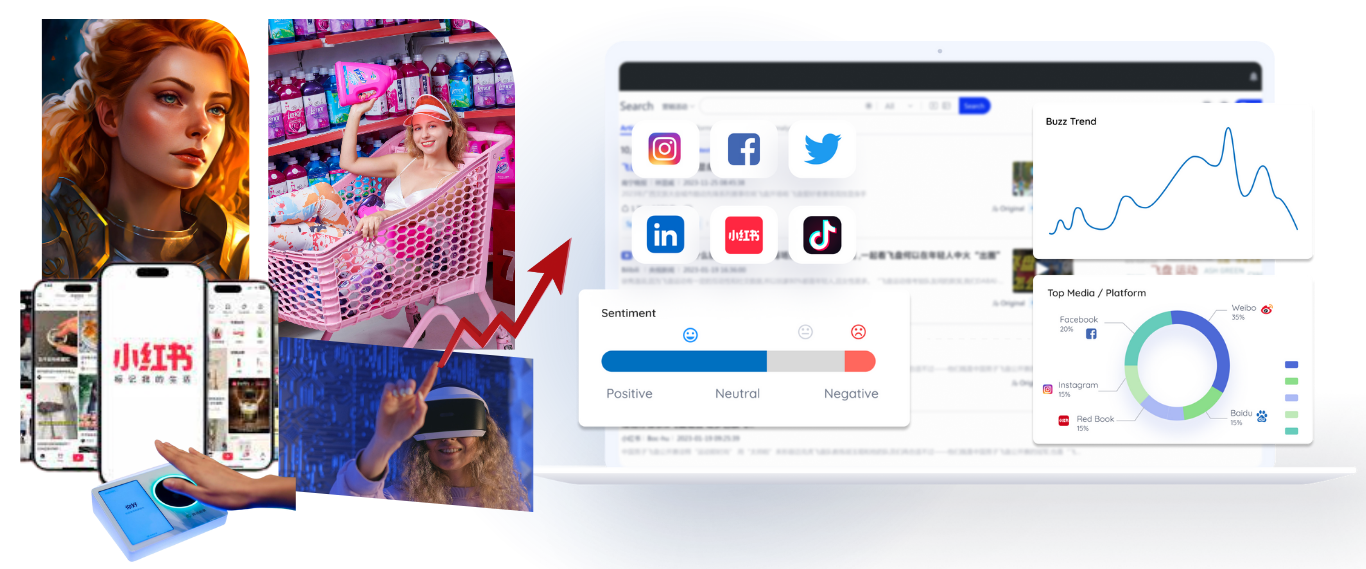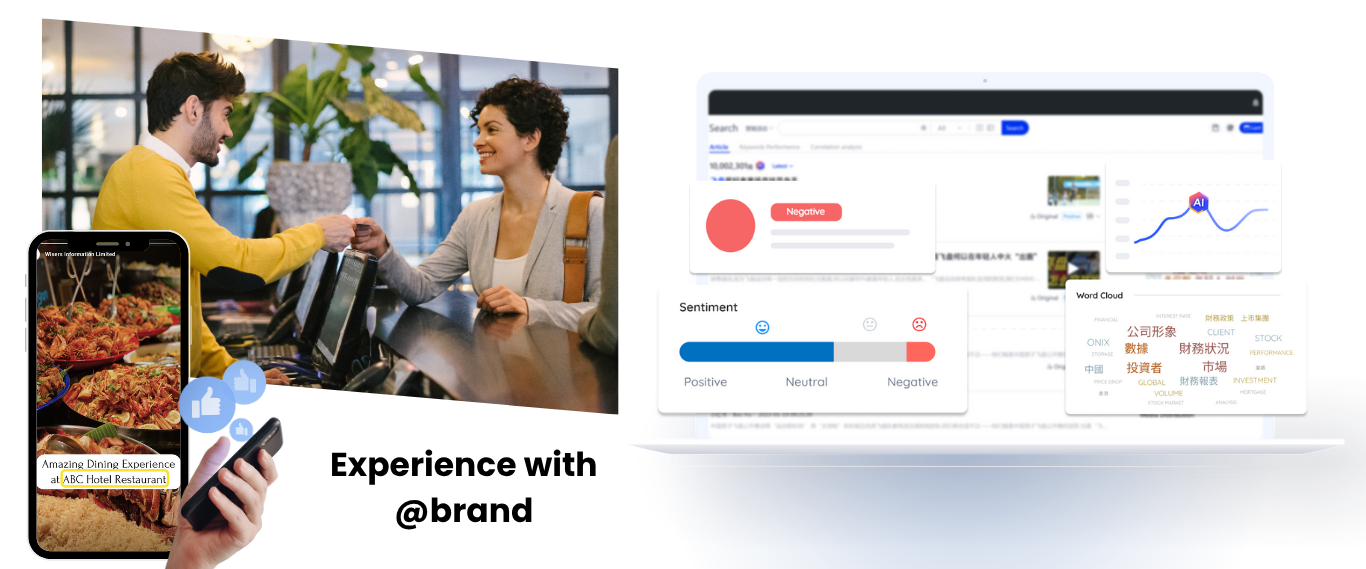In today’s fast-paced digital world, staying ahead of the competition requires real-time insights into media trends, consumer sentiment, and competitor strategies.
Media intelligence, powered by advanced media monitoring tools, helps businesses make data-driven decisions, enhance brand reputation, and drive growth.
Whether you’re a PR manager tracking brand mentions or a marketing manager analysing industry trends, leveraging media intelligence can transform how you engage with your audience.
Here are 5 Key Ways Businesses can use Media Intelligence to gain a competitive edge.
1. Generate High-Quality Leads
Media intelligence and media monitoring help companies generate leads by tracking competitors, industry trends, and real-time conversations to identify potential customers. By setting up keyword alerts for phrases like “[your brand name]”, “best pet insurance” or monitoring social media for pain points, businesses can engage prospects at the right moment. Analysing competitor mentions reveals unhappy customers who may switch, while news triggers signal buying intent. Social listening allows direct engagement with decision-makers, and sentiment analysis spots frustrated users ready for a solution.
Industry Example:
-
A financial services firm uses WiseMonitor to track phrases like “best investment platform for beginners” and notice growing engagement in this topic. They can adjust their online ad audience accordingly to capture this segment, increasing conversions by 25%.
Actionable Tip:
- PR and marketing teams can set up alerts for intent-based keywords (e.g., “best [industry] solution”) to discover warm leads in real time.
- PR Managers can identify journalists and influencers discussing their industry for outreach.
- Marketing Teams can spot intent-driven conversations and deploy hyper-targeted ads.
2. Become a Trendsetter in Your Industry
Companies can transition from being trend followers to industry trendsetters by gaining real-time insights into emerging conversations, unmet market needs, and shifting consumer behaviours. Advanced monitoring tools track not just what’s being discussed today, but also predictive signals—such as rising keywords, niche influencers, and early-adopter sentiment—allowing brands to spot opportunities before they go mainstream.
By analysing competitor strategies and gaps in the market, companies can pioneer new narratives, launch disruptive campaigns, and position themselves as thought leaders. Real-time data on audience reactions also enables rapid iteration, ensuring innovations resonate strongly. With proactive media intelligence, businesses don’t just adapt to trends; they define them, shaping industry standards and staying ahead of the curve. WiseMonitor’s AI-driven trend analysis detects emerging topics before they peak. By analysing media buzz, sentiment shifts, and engagement spikes, businesses can capitalise on trends early.
Industry Example:
-
A cosmetics brand spots a rising demand for “clean beauty” via WiseMonitor’s trend reports and launches a campaign before competitors, gaining 15% more media coverage.
Actionable Tip:
- Marketing managers should track hashtags, viral topics, and influencer discussions to identify trends early and craft timely campaigns.
- Marketing Managers can adjust campaigns in real time based on trend data.
- PR Teams can position executives as thought leaders by commenting on emerging trends.
3. Analyse & Benchmark Competitors
By leveraging media monitoring tools, businesses gain a competitive edge through real-time analysis of rival brands’ strategies, campaigns, and audience engagement. Tracking competitors’ media mentions, social sentiment, and PR moves reveals gaps in the market, allowing companies to refine their messaging and differentiate their offerings. Monitoring competitors’ top-performing content, customer complaints, and influencer partnerships helps brands identify best practices while avoiding their mistakes. Advanced sentiment analysis uncovers weaknesses in competitors’ reputations, enabling targeted outreach to dissatisfied customers. Additionally, benchmarking share of voice (SOV) and industry trends ensures data-driven decisions, helping businesses outrank competitors in SEO, thought leadership, and customer acquisition. With actionable insights from media monitoring, companies can optimise marketing strategies, enhance brand positioning, and drive sustainable growth, staying ahead in today’s fast-moving digital landscape.
Industry Example:
A tech startup monitors competitor product launches and customer feedback. They identify gaps in competitors’ offerings and highlight their superior features in marketing campaigns.
Actionable Tip:
- PR teams should compare share of voice (SOV), sentiment analysis, and engagement rates against competitors to adjust messaging strategies.
- PR Teams can counter negative competitor narratives.
- Marketing Teams can refine messaging based on competitor weaknesses.
4. Enhance Customer Experience & Retention
Tracking brand mentions, reviews, and social conversations helps identify recurring complaints, allowing companies to proactively resolve issues before they escalate. Analysing customer feedback across platforms reveals trends in preferences and expectations, enabling personalised engagement and tailored solutions. Monitoring competitor customer experiences highlights industry benchmarks, helping brands differentiate their CX strategies. Additionally, recognising and rewarding brand advocates fosters loyalty, while detecting early signs of churn (e.g., negative sentiment or support queries) allows timely intervention. With data-driven insights from media monitoring, companies can refine products, optimise support, and build emotional connections, turning satisfied customers into loyal promoters for long-term growth.
WiseMonitor scans customer reviews, social media complaints, and forum discussions to detect dissatisfaction early.
Industry Example:
-
A hotel chain uses WiseMonitor to detect a surge in complaints about “slow Wi-Fi.” They upgrade infrastructure and announce improvements, boosting satisfaction scores by 20%.
Actionable Tip:
- Customer support teams should set up sentiment alerts to quickly respond to negative feedback and amplify positive mentions.
- PR Teams can turn positive feedback into testimonials.
5. Identify Opportunities for New Products/Services
Tracking industry conversations, competitor launches, and customer pain points across news, social media, and forums reveals untapped market opportunities. Analysing spikes in related keywords, hashtags, or complaints helps identify rising demands before they become mainstream, allowing brands to pioneer solutions proactively. Monitoring tech advancements, regulatory changes, or cultural shifts also uncovers white spaces for disruption. Additionally, sentiment analysis of competitor offerings highlights shortcomings that can inspire differentiated features or premium services. With real-time media insights, companies move beyond guesswork to data-driven product/service innovation, ensuring new products resonate with market needs and secure first-mover advantage.
Industry Example:
- A digital bank noticed declining engagement with its generic credit cards but lacked data on what customers truly wanted. WiseMonitor revealed that Millennials on Facebook criticized ‘useless rewards’ like airline miles, competitors faced backlash over poor FX rates on travel cards, crypto influencers demanded Bitcoin rewards (#DeFi), and 42% of tweets called credit card perks ‘out of touch’—uncovering key gaps for a disruptive new product. Leveraging these insights, the bank launched a customisable credit card with dynamic rewards—including Bitcoin cashback and real-time FX rate locks—directly addressing Millennials’ frustration with generic perks and outperforming competitors’ offerings in both innovation and customer relevance.
Actionable Tip:
- Product managers should analyse consumer pain points and trending search queries to innovate effectively.
- Marketing Teams can craft campaigns around unmet needs.
Conclusion
In a time when market trends and cultural shifts change rapidly, companies relying on outdated strategies are falling behind. Media monitoring and intelligence provide the real-time insights you need to stay competitive. This tool allows PR teams to manage narratives by identifying potential crises early and leveraging positive trends. For marketers, it delivers actionable data to create agile campaigns by tracking competitor activity and cultural conversations. Brands that fail to adopt these insights risk losing relevance, while those who act quickly transform challenges into opportunities.
With tighter budgets and higher expectations, media intelligence is no longer optional. It is the foundation for innovation and long-term success in an unpredictable market.
#MediaIntelligence #MediaMonitoring #PRStrategy #MarketingTips #CompetitiveAnalysis #CustomerExperience #TrendAnalysis












